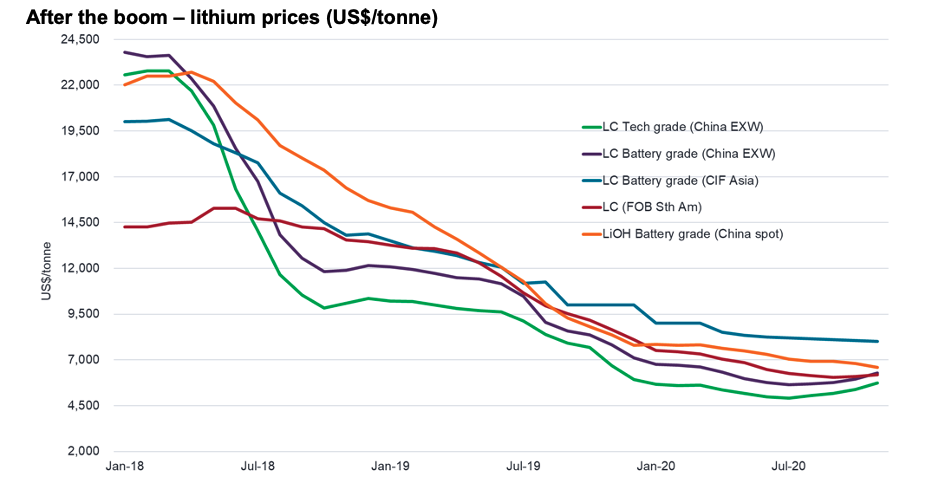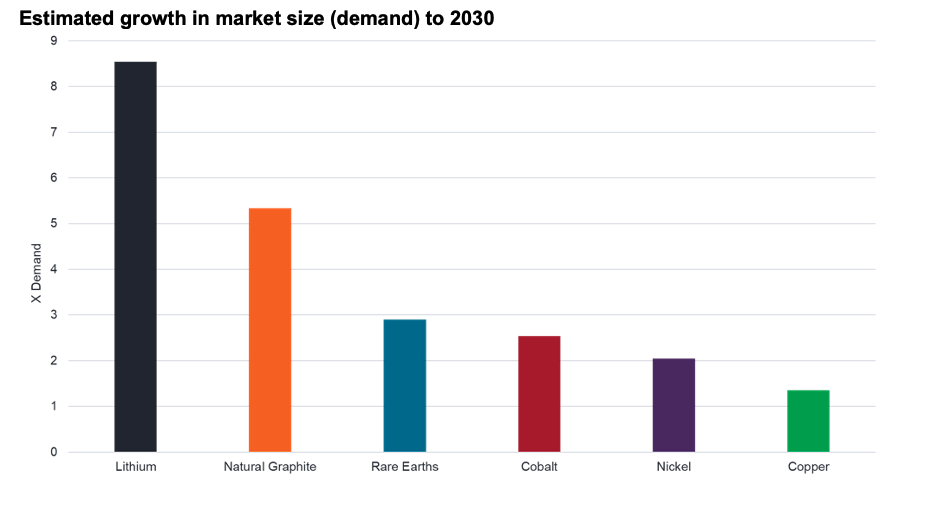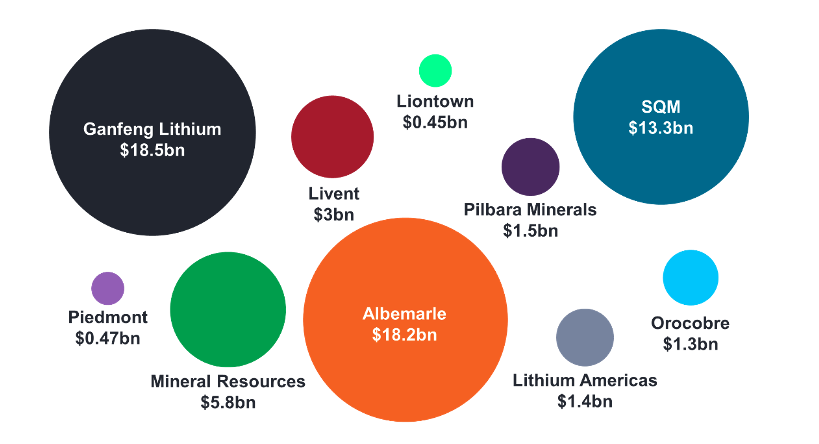How to ride the clean power surge
As natural resources equity investors, we believe the clean energy transition and its impact on materials demand should not be overlooked. This is a global, multi-year trend, driven by the growing adoption of electric vehicles and continued investment in renewable energy generation.
With many countries and corporations committing to net zero carbon emission targets by 2050, a massive transformation will be required. Commitment to these targets will result in strong demand for copper, nickel, aluminium, cobalt, lithium, graphite and various rare earths as they are key components in EVs and renewable energy generation infrastructure. Investment in new production capacity will be required to meet the predicted demand.
Lithium, which forms the core of the lithium ion batteries that power EVs and store renewable power, is a key beneficiary of the clean energy transition. During the last lithium boom (2014-2018), lithium demand expanded at approximately 20% compound annual growth rate, while the commodity price more than tripled.
This is a relatively common dynamic for commodity markets, where new demand surges and outpaces existing supplies. Higher prices encouraged exploration, leading to the discovery of numerous hard rock lithium deposits in Australia, with five new mines built in quick succession. Increased supply coupled with short-term flattening of demand led to a 50% fall in prices since the 2018 peak. This now appears to be over, with demand increasing and a reduction in the raw material and product investment leading to prices increasing.

Source: Bloomberg, as at 26 November 2020
It is anticipated that 2021-2022 will be the inflection point for EV demand, as the mainstream auto industry begins to roll out new cost-competitive models. EV penetration is expected to increase from 3% to +30% of vehicle sold by 2030, as battery costs decline to US$100/kWh making EVs very cost-competitive with internal combustion engine vehicles. Demand for lithium ion batteries should therefore grow materially, in parallel with growth in EV production with CAGR’s of +30% p.a.
Tesla at its recent investor day suggested that battery capacity could increase to 3 terawatt-hours (3 million megawatt-hours) by 2030, which is equivalent to demand of 2.4-2.8 million tonnes per annum of lithium carbonate equivalent (LCE). This is significant given that demand for lithium in 2020 was estimated at 0.35 million tonnes of LCE, with capacity of around 0.55 million tonnes. According to UBS, lithium demand and production may need to increase 8-fold over the next 10 years. Meeting this rapid demand growth will be a major undertaking given lithium companies have reduced/delayed capital investment in the recent price pullback. Lithium supply could become acute over the medium-term once current production capacity is fully utilised, leading to supply tightness. Many of the major auto and battery makers have not secured lithium supply volumes that they need.

Source: UBSe, 2020
Although EV batteries have been the main talking point regarding raw materials demand, we cannot overlook the potential growth from the stationary storage market (residential, utility and industrial applications). This could increase demand for battery raw materials significantly; 5X for graphite, 3X for rare earths and cobalt and doubling in nickel. Whilst these numbers look very large, the investment intentions of the global auto and battery industry imply these are growth levels driven by government regulatory actions and the improving competitiveness of EVs themselves.
Copper is expected to be a beneficiary of EV growth as it is an essential material for EV components and renewable energy infrastructure. According to the Copper Development Association Inc., battery EVs contain 83kg of copper, while electric buses contain up to 370kg.
The equity market has already started to move ahead of the commodity price moves in anticipation of the return to boom times. Producers such as Albemarle, Ganfeng Lithium, SQM, Livent, Pilbara Minerals, Mineral Resources and Orocobre have performed strongly in 2020 with the Global X Lithium and Battery ETF (NYSE ARCA:LIT) price up 94% YTD. As in the last lithium cycle, we anticipate the emergence of new producers, such as Lithium Americas, Piedmont and Liontown as well as new development opportunities. The chart below shows the current relative market capitalisation of these producers, but we believe this chart could look quite different in 12-24 months’ time.
Relative
size of lithium producers by market capitalisation (AUD)

Source: Janus Henderson
Investors, Bloomberg
One thing investors can't ignore in 2021
The above wire is part of Livewire's exclusive series titled "The one thing investors can't ignore in 2021." The series will culminate in the release of a dedicated eBook that will be sent to readers on Monday 21 December. You can stay up to date with all of my latest insights by hitting the follow button below.
29 May 2020, https://www.cnbc.com/2020/05/29/led-by-tesla-electric-vehicle-sales-are-predicted-to-surge-in-2021.html
4 topics

